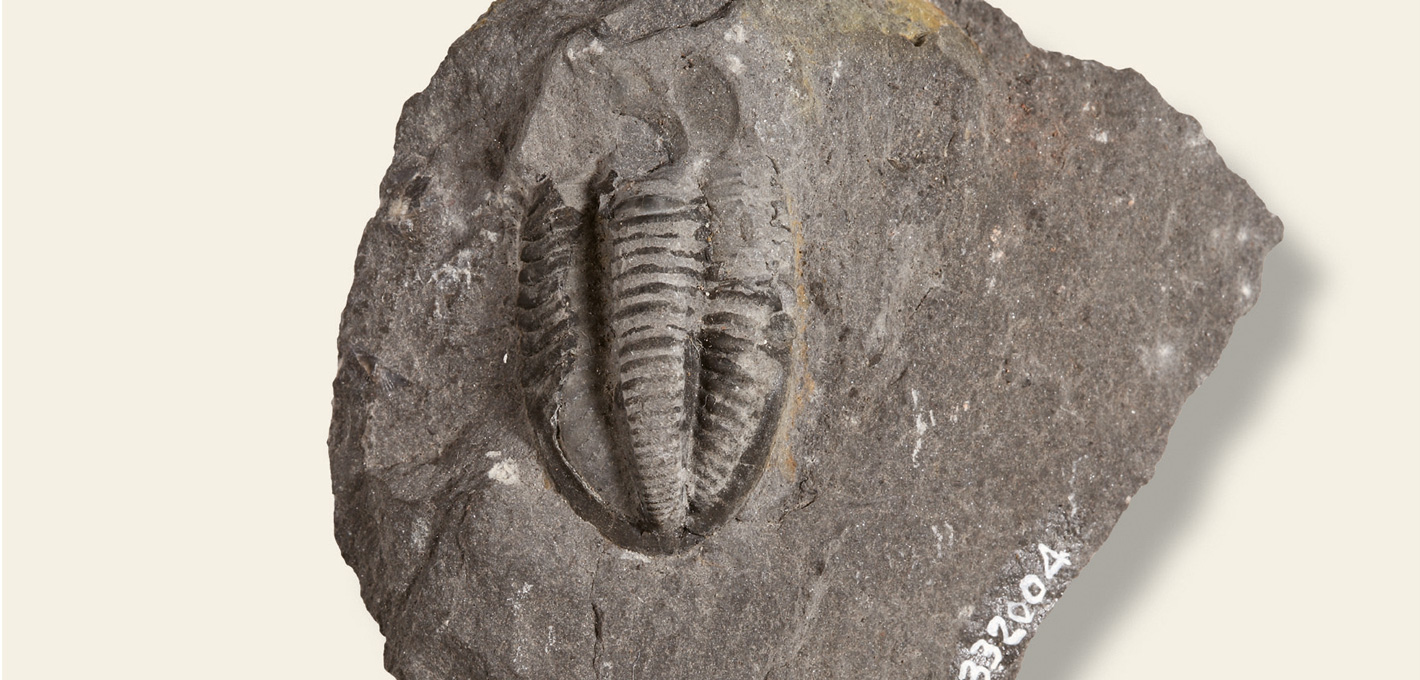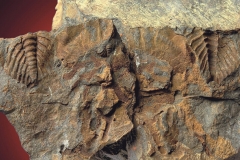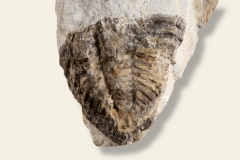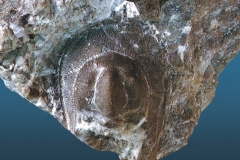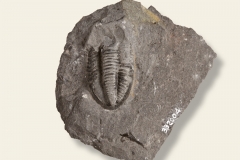Arthropods – Trilobites
BackCharacteristics
Arthropods are an extremely diverse group of invertebrates. They are generally divided into Trilobites, Chelicerates (scorpions, spiders, ticks and mites), Crustaceans (the shrimps and crabs) and Uniramia (the millipedes, centipedes and insects). All of them share a rigid outer covering, the exoskeleton, and appendages with articulated joints suitable for locomotion and feeding (their “legs”). Only those with a mineralized exoskeleton and shells have bequeathed us good fossil evidence of their evolutionary history.
The Trilobites are a group of arthropods that lived during the Palaeozoic era and are now completely extinct. They get their name from the triple division of their bodies into a cephalon (the head), thorax and pigidium (the “tail”), all covered by a rigid carapace.
Chronological distribution
Trilobites appeared during the Lower Cambrian and finally disappeared in the Upper Permian (about 255 million years ago). However, their decline had already begun tens of millions of years earlier. They are important guide fossils and as a result of their distribution and rapid differentiation they are used to date rock layers.
Their locations within the Geopark area
Fossils of trilobites have been found in various areas of the main Carnic chain, on both the Italian and Austrian sides of the border and especially in the rocks dating back to the Silurian.
TO GET AN IDEA …
Some of the most significant fossils of Arthropods – Trilobites from the area of the Geopark

